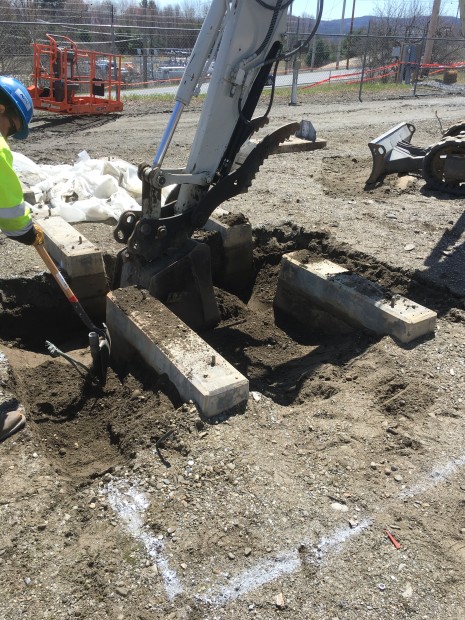Polychlorinated Biphenyls (PCBs) Assessment and Remediation
Polychlorinated Biphenyls (PCBs) are a persistent class of man-made chemical compounds that were widely used from 1929 to 1979 in many industrial and commercial applications that required non-flammable, stable, and electrically insulating properties. Molecularly, they exhibit properties that are very similar to dioxins and are suspected carcinogens. Although banned in 1979, PCBs remain a prominent public health concern and continue to present challenges to owners undergoing redevelopment projects.
Our PCB Remedial Planning and Cleanup Services
Stone uses a comprehensive understanding of the site’s past and current use and a detailed conceptual model to guide investigations. We diagnose the degree and extent of contamination through careful and thoughtful work planning, establishing contaminant release mechanisms and pathways through careful historical research of each sites’ historical use. With Vermont’s recent reinterpretation of a release of PCBs to include “the intentional or unintentional action or omission resulting in the spilling, leaking, emission, or disposal of PCBs from building materials in a building or structure,” we have developed a digital building survey tool to document potentially PCB-containing materials to guide indoor air sampling projects at Brownfields and Vermont schools. We work closely with project owners, design professionals, and contractors to ensure renovation and environmental management responsibilities are synchronized. Each project concludes with remedial cleanup verification sampling and analysis of indoor air and remaining materials to ensure TSCA compliance and effective removal of contamination.
-
Cutting PCB contaminated Slab
Cutting and removal of PCB contaminated concrete slab under a self-implementing cleanup plan
-
Installation of concrete barrier over PCB contaminated slab
Installation of concrete barrier over PCB contaminated slab under a self-implementing cleanup plan
-
PCB contaminated caulk
PCB contaminated caulk in expansion joint
-
Subsurface structure coated with PCB-containing oil
Performance-based cleanup of a subsurface structure coated with PCB-containing oil
-
Excavation of PCB-contaminated soil at former industrial property
Excavation of PCB-contaminated soil at former industrial property
-
On-site treatment of excavation dewatering liquids
On-site treatment of excavation dewatering liquids using granular activated carbon
-

Excavation of PCB contaminated soil
Excavation of PCB contaminated soil at electrical substation
Where PCBs Are Often Found?
PCBs in Building Materials
PCBs are often found in institutional buildings such as schools, hospitals, and municipal or state offices constructed or renovated between approximately 1950 and 1979. Facility managers, prospective purchasers, contractors, and developers often discover PCBs in indoor air due to their use in building materials such as paint, caulk, floor finish, plastics, oil-based paints, insulation materials, fluorescent light ballasts, and more. Stone Environmental works with developers and property owners to limit the impacts of safely removing and properly disposing materials during building renovations.
PCBs in Remediation Waste
In addition to building materials, PCBs may be present in soil, sediment, sludge, masonry, debris, or other matrices at a property due to the use and release of PCB containing liquids, such as dielectric fluid, cutting oil, hydraulic fluids, or lubricating and gear oils among others. Stone’s Environmental Assessment and Remediation team has broad experience investigating the scale and scope of contamination from a spill, release, or unauthorized disposal and developing strategies for cleanup. To develop appropriate work scopes, Stone’s scientists and engineers employ high resolution site characterization strategies to reduce iterations of field work and shorten project timelines. We utilize a variety of sampling techniques in preparation of a TSCA-compliant cleanup plan and employ a sampling logic to archive collected samples. Samples are submitted for lab analysis to identify the extent of contamination and results are used as the basis for developing a cleanup plan.
Contact
To find out more about how we support PCB assessment and remediation, fill out our contact form or contact:
Daniel Voisin via email.
